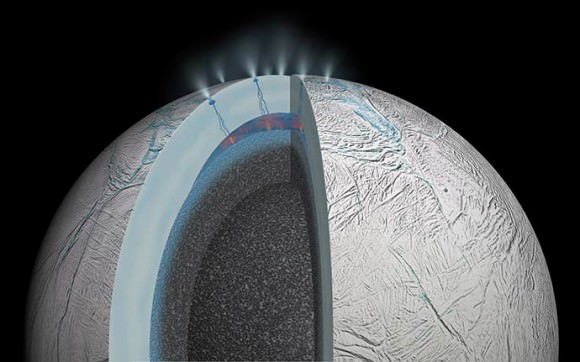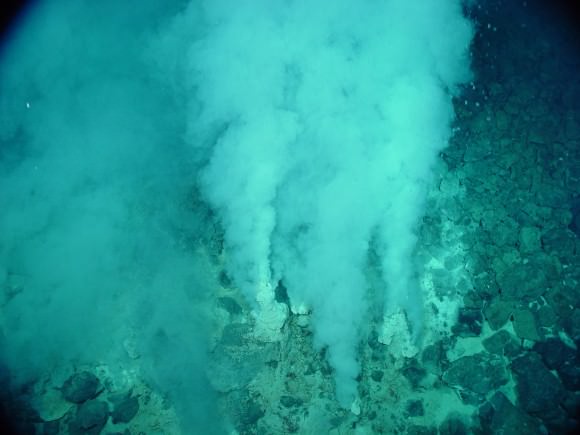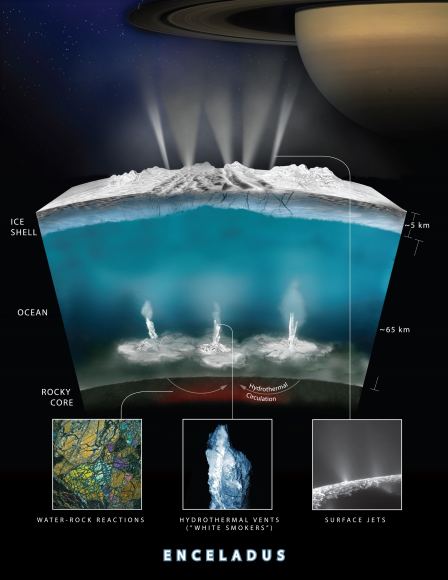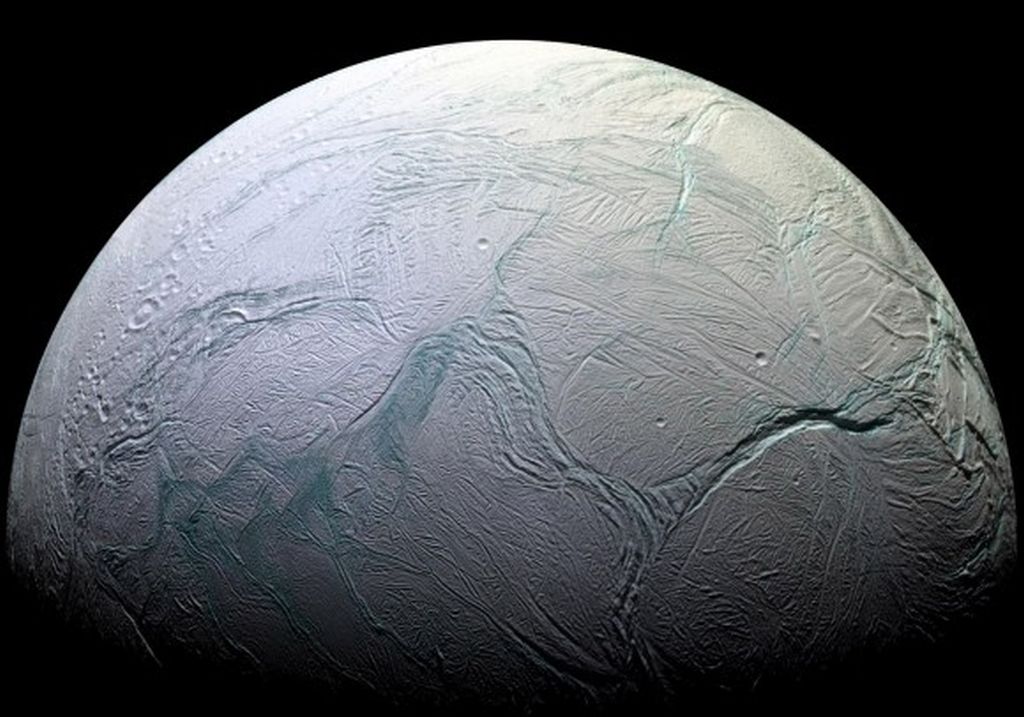For decades, ever since the Pioneer and Voyager missions passed through the outer Solar System, scientists have speculated that life might exist within icy bodies like Jupiter’s moon Europa. However, thanks the Cassini mission, scientists now believe that other moons in the outer Solar System – such as Saturn’s moon Enceladus – could possibly harbor life as well.
For instance, Cassini observed plume activity coming from Enceladus’ southern polar region that indicated the presence of hydrothermal activity inside. What’s more, these plumes contained organic molecules and hydrated minerals, which are potential indications of life. To see if life could thrive inside this moon, a team of scientists conducted a test where strains of Earth bacteria were subjected to conditions similar to what is found inside Enceladus.
The study which details their findings recently appeared in the journal Nature Communications under the title “Biological methane production under putative Enceladus-like conditions“. The study was led by Ruth-Sophie Taubner from the University of Vienna, and included members from the Johannes Kepler University Linz, Ecotechnology Austria, the University of Bremen, and the University of Hamburg.

For the sake of their study, the team chose to work with three strains of methanogenic archaea known as methanothermococcus okinawensis. This type of microorganism thrives in low-oxygen environments and consumes chemical products known to exist on Enceladus – such as methane (CH4), carbon dioxide (CO2 ) and molecular hydrogen (H2) – and emit methane as a metabolic byproduct. As they state:
“To investigate growth of methanogens under Enceladus-like conditions, three thermophilic and methanogenic strains, Methanothermococcus okinawensis (65 °C), Methanothermobacter marburgensis (65 °C), and Methanococcus villosus (80 °C), all able to fix carbon and gain energy through the reduction of CO2 with H2 to form CH4, were investigated regarding growth and biological CH4 production under different headspace gas compositions…”
These strains were selected because of their ability to grow in a temperature range that is characteristic of the vicinity around hydrothermal vents, in a chemically defined medium, and at low partial pressures of molecular hydrogen. This is consistent with what has been observed in Enceladus’ plumes and what is believed to exist within the moon’s interior.
These types of archaea can still be found on Earth today, lingering in deep-see fissures and around hydrothermal vents. In particular, the strain of M. okinawensis has been determined to exist in only one location around the deep-sea hydrothermal vent field at Iheya Ridge in the Okinawa Trough near Japan. Since this vent is located at a depth of 972 m (3189 ft) below sea level, this suggests that this strain has a tolerance toward high pressure.

For many years, scientists have suspected that Earth’s hydrothermal vents played a vital role in the emergence of life, and that similar vents could exist within the interior of moons like Europa, Ganymede, Titan, Enceladus, and other bodies in the outer Solar System. As a result, the research team believed that methanogenic archaea could also exist within these bodies.
After subjecting the strains to Enceladus-like temperature, pressure and chemical conditions in a laboratory environment, they found that one of the three strains was able to flourish and produce methane. The strain even managed to survive after the team introduced harsh chemicals that are present on Enceladus, and which are known to inhibit the growth of microbes. As they conclude in their study:
“In this study, we show that the methanogenic strain M. okinawensis is able to propagate and/or to produce CH4 under putative Enceladus-like conditions. M. okinawensis was cultivated under high-pressure (up to 50 bar) conditions in defined growth medium and gas phase, including several potential inhibitors that were detected in Enceladus’ plume.”
From this, they determined that some of the methane found in Enceladus’ plumes were likely produced by the presence of methanogenic microbes. As Simon Rittmann, a microbiologist at the University of Vienna and lead author of the study, explained in an interview with The Verge. “It’s likely this organism could be living on other planetary bodies,” he said. “And it could be really interesting to investigate in future missions.”

In the coming decades, NASA and other space agencies plan to send multiple mission to the Jupiter and Saturn systems to investigate their “ocean worlds” for potential signs of life. In the case of Enceladus, this will most likely involve a lander that will set down around the southern polar region and collect samples from the surface to determine the presence of biosignatures.
Alternately, an orbiter mission may be developed that will fly through Enceladus’ plumes and collect bioreadings directly from the moon’s ejecta, thus picking up where Cassini left off. Whatever form the mission takes, the discoveries are expected to be a major breakthrough. At long last, we may finally have proof that Earth is not the only place in the Solar System where live can exist.
Be sure to check out John Michael Godier’s video titled “Encedalus and the Conditions for Life” as well:


“From this, they determined that some of the methane found in Enceladus’ plumes were likely produced by the presence of methanogenic microbes…”
Whoah! Quite the claim.